Display advertising is changing. New display advertising statistics from SEMRush, eMarketer, and other sources shows that how ads are bought, the technologies used to deliver them, and how consumers feel about display ads are all in flux.
We think that’s good news. Because where there’s change, there’s opportunity. Besides, if you don’t like change, marketing isn’t the place to be right now.
As pay per click keeps changing, it’s critical for marketers to change with it. That means staying up to date with the latest research and information, but it also means changing your advertising strategies to adapt to the new environment.
So while all ten of these display advertising statistics are interesting, don’t just skim over them and move on. Think about how to apply them to your own campaigns.
-
Google’s Display Ad Network reaches 90% of global internet users.
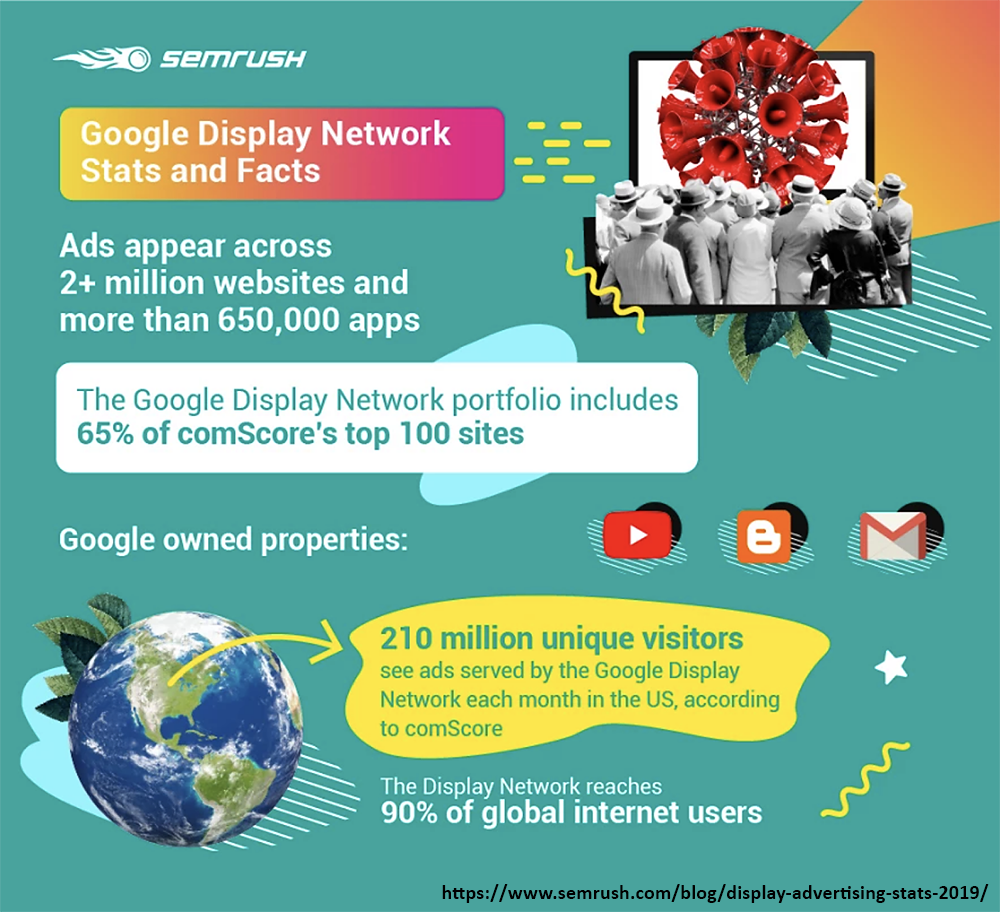
Got reach? If you’re advertising on Google’s Display Ad Network, you sure do. Your ads can potentially appear on 2 million websites and more than 650,000 apps.
Facebook, of course, has its own display network. And its user base is huge. Facebook had over 1.56 billion daily active users as of March, 2019.
We couldn’t find a recent stat on exactly what percent of all internet users Facebook’s display ads reach in 2019, though it was 51% in 2012. And as you know, Facebook’s grown a bit since then.
Just focusing on Google and Facebook’s display ad networks is enough to get most marketers all the reach they want, but Bing has a healthy display ad network, too. Advertising on Bing will give you access to 63 million consumers Google Ads can’t reach.
-
Advertisers are getting smart about cross-device targeting.
The heyday of the desktop is over. Which is why businesses have been encouraged to think “mobile-first” for years. Well… it seems advertisers got the message. At least the ones SEMRush studied. The online shopping advertisers they studied have spread their ads across different devices surprisingly evenly, as you can see below.
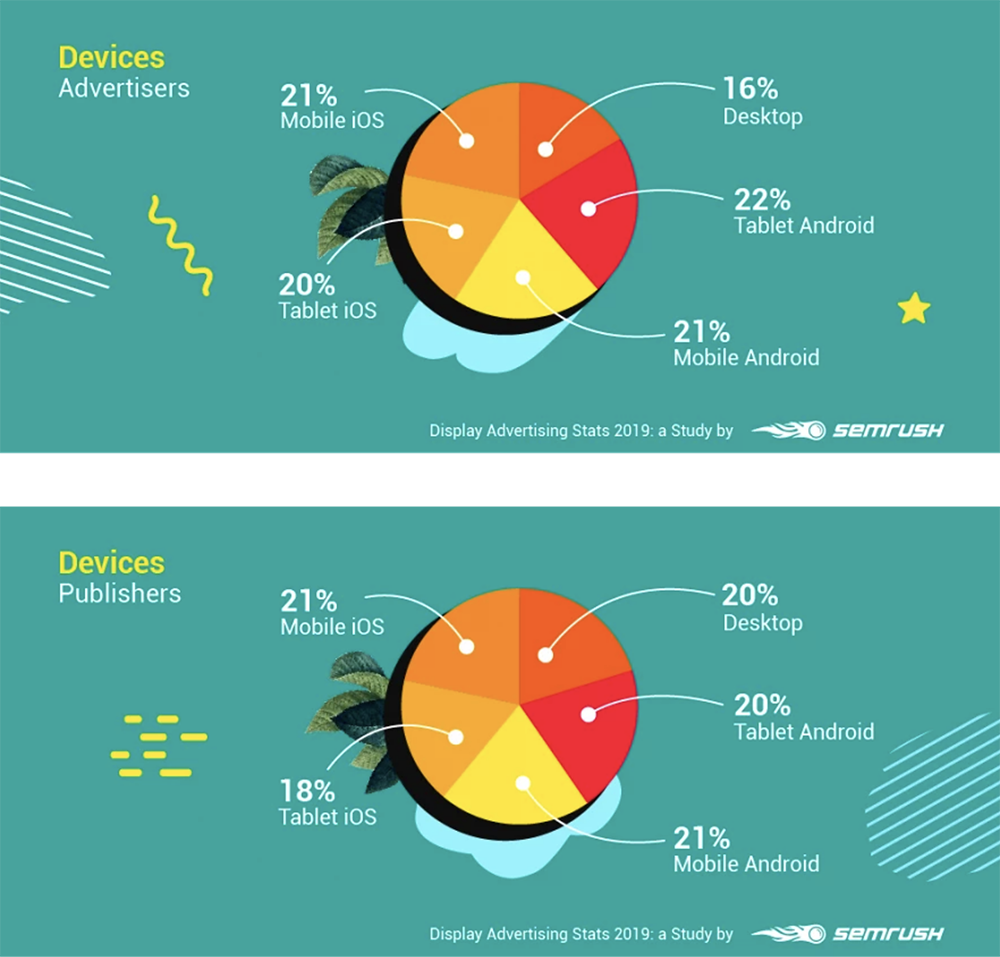
Even if you’re not in the online shopping industry, this is a good benchmark to use for your own ads. What percent of impressions, clicks, and conversions are coming from different devices for your own display advertising campaigns?
3. 83.6% of US digital display ad dollars will be spent programmatically in 2019.
This is a slightly older display advertising statistic from eMarketer, but it shows how completely programmatic has taken over ppc marketing.
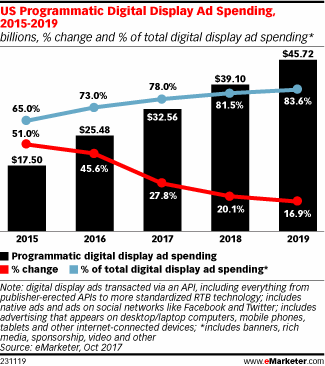
Most of this programmatic spend is also on mobile devices. According to eMarketer, “By 2019, nearly 80% of programmatic ad spend will go to mobile—rather than desktop—ads.”
Also note how much ad spend is going to video: “By 2019, 77% of all US digital video ad dollars will move programmatically.”
We’ve said this before, but we’ll say it again here: Don’t fear the machines. Letting algorithms automate part of your display ad management can free up a lot of time for other things.
-
Native advertising is big and getting bigger.
Native advertising “is a method of displaying ads so they fit naturally with the reader or viewer experience” according to G2 Crowd. This subset of the overall display ad market is flourishing, probably because it shows ads in context.
Native ads also have an element of intent to them that some display ads lack (the user clicked through to the content page, so they are actively seeking information related to the native ad).
Here are a few especially interesting stats about how well native ads perform:
- Native ads receive 53 percent more views than traditional display ads.
- Native advertising increases purchase intent by 18 percent.
- By 2019, Native advertising will account for 61 percent of total digital display ad spending in the U.S.
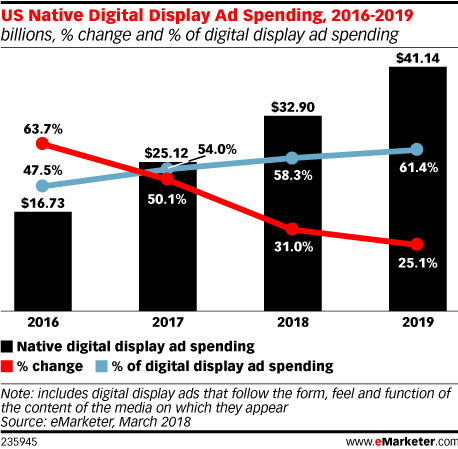
-
The average click-through rate for the Google Ad Display Network is 0.46%.
The average CTR for Google’s display network can vary a lot from industry to industry, of course. For example, Google display ads for real estate get an average click-through rate of 1.08%, while display ads for technology advertisers get only an average of 0.39%.
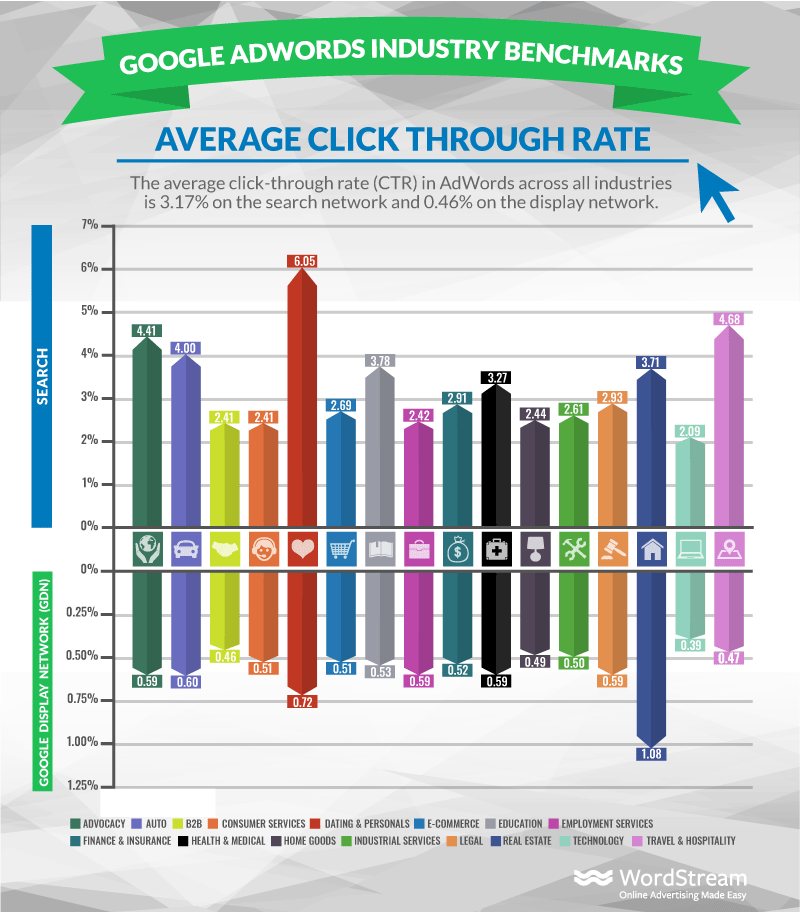
Display ads also get an average of $75.51 for each cost per action, and have an average conversion rate of 0.77%. The average cost per click for the display ad network is $0.63.
-
Leaderboard ads are the most popular ad size.
SEMRush found that leaderboard ads are used more than any other ad size. The “medium rectangle” ad size of 300 x 250 is used second most often.
Those two ad sizes are also recommended by Google as being among the top-performing ad sizes. However, there are two other ad sizes Google recommends – 300 x 600 and 320 x 100 – that advertisers don’t use much at all.
The 468 x 60 ad size is also an anomaly. Advertisers and publishers use it fairly frequently, but Google doesn’t list it as a top-performing ad size.
So if you’ve been avoiding 468 x 60 ads because Google doesn’t list them as a top-performing ad size, consider trying them. Some companies are doing well with that ad size.
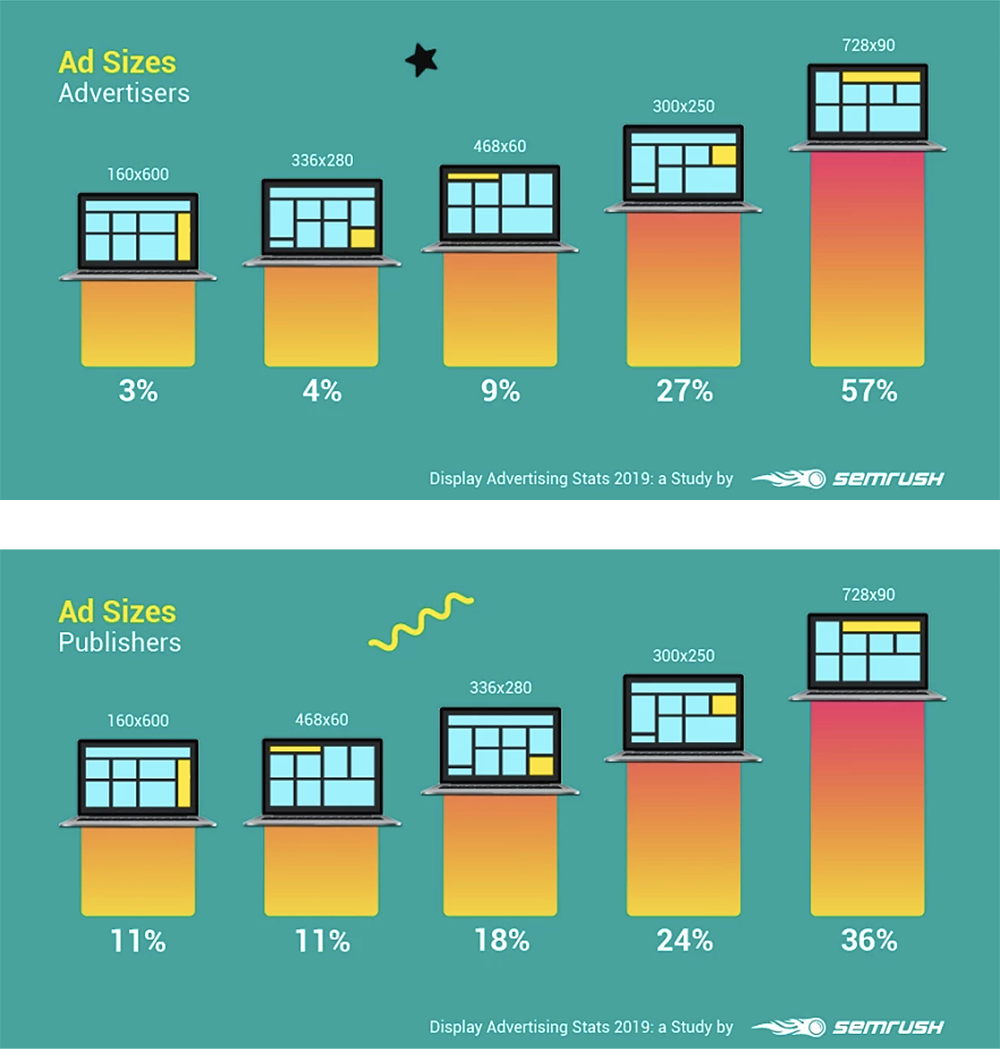
-
Mobile advertising spend – largely driven by display ads – now surpasses TV advertising spend.
It’s a sign of the times. Mobile usage has gotten so big, the amount being invested into mobile advertising is now bigger than TV advertising spend.
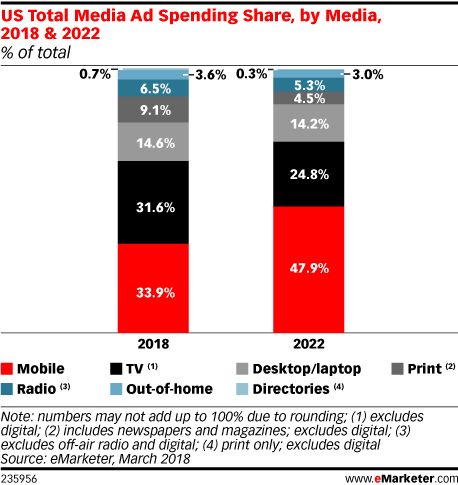
Display ads make up the bulk of mobile advertising, so we’re including this among the other display advertising statistics. It also provides some larger context about the state of digital advertising in general.
-
Responsive display ads are used more than images.
The last time SEMRush did their study in 2017, “Images dominated responsive ads by 68% to 32% in the retail industry.”
That’s changed a lot in the last two years. In 2019, 72% of display ads are responsive. That’s more than double what they found just two years ago.
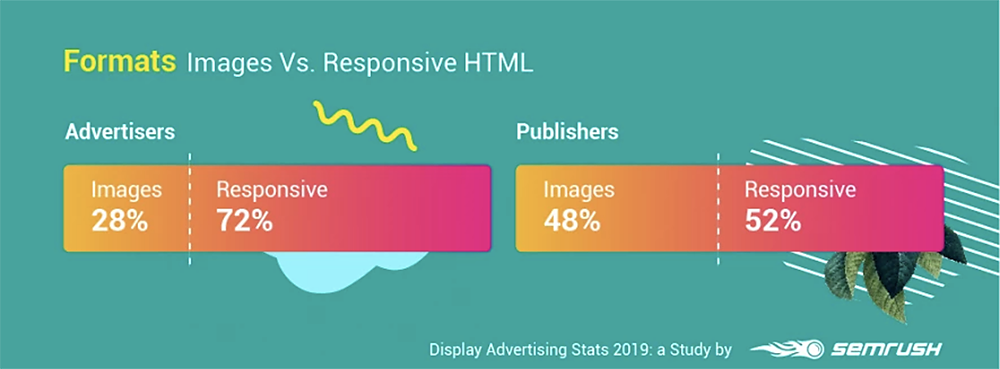
This is a smart move. It lets advertisers create one “adjustable” ad, and then lets them run it across all the available ad inventory in all the different ad sizes.
So here’s yet another thing to ask yourself: Are you using responsive display ads? If you’re not, it’s time to test them. Read Richard Beck’s blog post about responsive ads to find out how to get started.
-
More than one in four consumers use an ad blocker.
As much as we like display ads, there is one serious downside to them: Ad blockers. But ad blockers are really just a symptom of a bigger problem. That problem is irrelevant ads, or ads that may be relevant, but aren’t engaging their audiences well enough.
The consumer dissatisfaction driving the use of ad blockers has prompted some marketers and advertising experts to say “display ads are dead.” That’s probably overstating the problem, but the struggle is real: More than one in four consumers use ad blockers according to Statistica, and 47 percent of global consumers use ad blockers according to Digital Information World. Whatever the exact figure is, it’s big, and it is suppressing results.
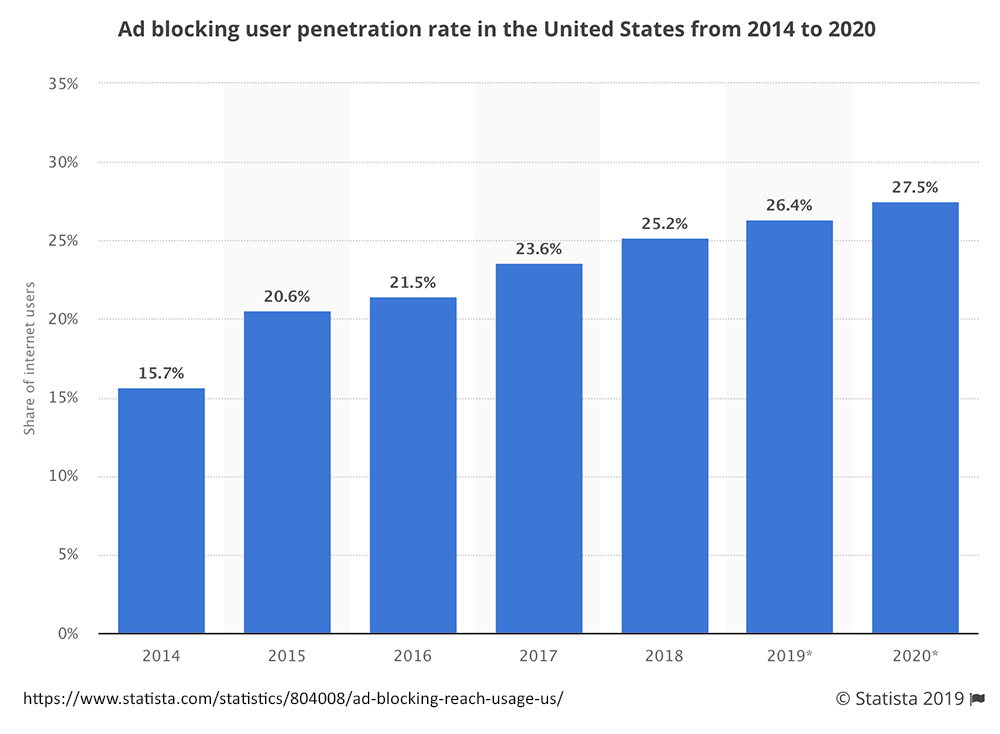
The solution? Make your ads more engaging. Study your advertising reports, research your audience, and figure out how to make ads they’ll like. It’s the age of the customer, after all. If marketers can’t please consumers, they’ll block us.
-
43% of ppc marketers say display ads are their least effective channel – yet 84% of marketers are still investing in display ads.
These display advertising statistics from Hanapin Marketing speak to some of the trouble marketers are having with display ads, and why some experts have talked about how display advertising is dead. And yet… with 84% of marketers will using display ads, clearly they aren’t dead yet.
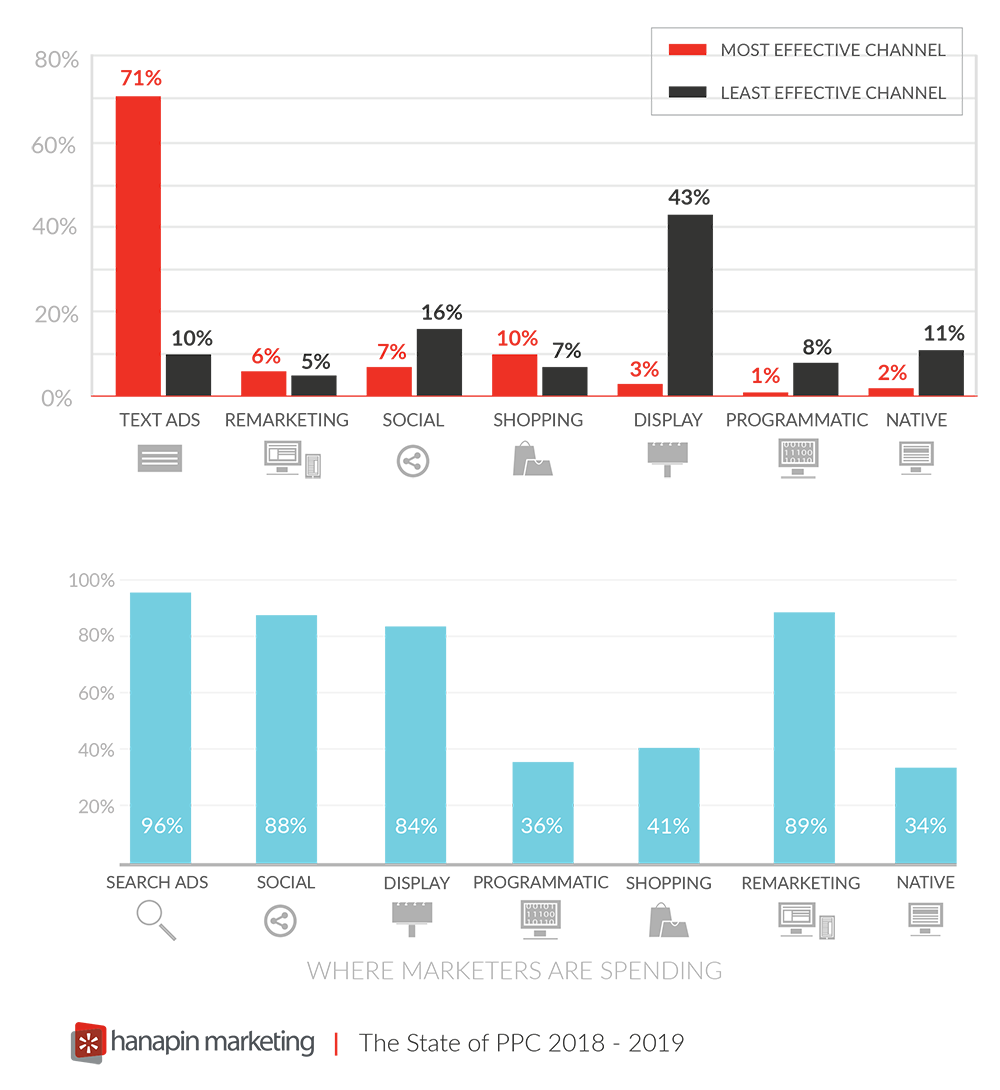
Part of the trouble with display ads may be ad blockers. Or it may be because display ads aren’t as targeted as some other types of ppc ads.
But display ads can be targeted. Take retargeting, for example. You can do retargeting with display ads. Ama Yassin explains how to do it here.
Conclusion
To paraphrase Mark Twain, reports of the death of display ads have been greatly exaggerated. Display ads may have their challenges, but they are such a fundamental ad format that we don’t see them falling out of use any time soon.
That said, display ads have to be done right. Targeting matters a lot, and so marketers need to use the tools available to show the right display ad to the right person. Display ads also need to nail their messaging, so marketers have to research their audiences and see which messages will resonate.
Finally, marketers need to experiment with display ads settings and features – just like with any other ad type. We cannot just publish any ad to any site. Consumers expect more thought and context than that. And if we can’t deliver relevant, engaging ads, consumers will use ad blockers even more.
IMAGES
1. Unsplash, Joshua Earle.
2-4, 8-9, 11. SEMRush, Display Advertising Stats 2019: SEMrush Study.
5-6, 10. eMarketer.
7. WordStream.
12. Statista.
13. Hanapin Marketing, The State of PPC 2018-2019.



